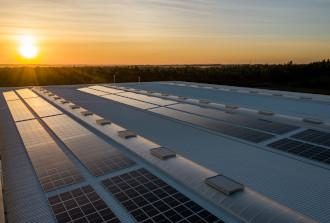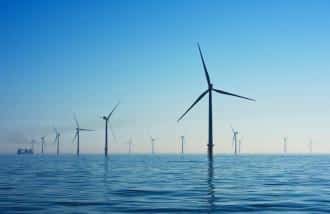By Abby Rabinowitz – August 2021, the U.N. issued a climate change report that “unequivocally” blamed humans for causing global warming and warned that future climate disruption is now a certainty. U.N. Secretary General Antonio Guterres referred to the report as a “code red for humanity.” This climate crisis is largely due to the consumption of fossil fuels. Fortunately, many environmental movements have arisen to combat this problem, promoting sustainable clean energy as alternatives to fossil fuels.
The Progress In Sustainable Energy Use
Historically, non-renewable resources such as wood, coal, oil and natural gas were the primary sources of energy in society. These resources produced reliable power, but resulted in large amounts of pollution and emissions of carbon dioxide into the atmosphere. As awareness of these side effects grew, scientists began to consider alternative, cleaner sources of power. The key drawbacks of these were initially high installation costs, higher ongoing costs of energy and a lack of reliability as primary power sources. Recently, great strides have been made in improving upon these technologies, to lower their costs and improve their efficacy. We are now finally at a stage at which countries and companies are beginning to set target date goals to fully transition from fossil fuels to sustainable energy sources.
Sustainable Energy Alternatives
While scientists are experimenting with many new sustainable energy technologies, the following are the most advanced and commercially viable alternatives:
Solar energy uses energy from the sun and converts usable electrical energy. This is a key sustainable energy source which addresses various environmental concerns. According to the Solar Energy Industries Association, there are on average 103 gigawatts (GW) of solar installed in the U.S., enough to power 18.6 million homes.
Another prime source of sustainable energy is wind energy. This harnesses the kinetic energy found in the wind and by spinning the turbine, turns it into usable energy. Studies done by the Department of Energy show its promise in being a sustainable alternative to fossil fuel energy. There are also many other sources of sustainable clean energy such as hydro-power, nuclear, hydrogen and geothermal.
The Commitment To Environmental Progress and Sustainable Energy
In August this year, the U.S. Senate passed the Bipartisan Infrastructure Investment and Jobs Act. While the bill is broadly focused on infrastructure, the Bill notably prioritizes clean energy as a key piece of its forward thinking infrastructure mandate. This legislative achievement represents a giant step in the right direction toward promoting sustainable energy and reducing our country’s dependence on fossil fuels.
The U.S. is not alone in its commitment to clean energy. According to NS Energy, the U.S. is one of the top five countries for renewable energy investment, among other countries such as Germany, The United Kingdom, China, France and Spain. These as well as many other countries are beginning to invest more to reduce the use of fossil fuels and other non environmentally friendly energy sources, in the hope of cutting carbon emissions by 50-52% by 2030 as compared to 2005 levels. These commitments are a significant down payment toward the European Union’s goal of achieving carbon neutrality by 2050, a major milestone in terms of sustainability and sustainable energy.
Measuring Environmental Progress
How then can we measure environmental progress? Certainly carbon dioxide emissions would be a good start, and hopefully by 2030, we will be able to measure tangible progress. But in addition, there are other forms of progress that we can measure today. Consider advances in four key areas: 1) awareness of sustainability, 2) changing consumer preferences, 3) corporate actions and 4) governmental actions.
Awareness of Environmental Progress and Sustainable Energy
Awareness – There are now many publications focused on sustainability. For example, the journal, the American Institute of Chemical Engineers gives a review on critical issues of the environment including remediation and treatment of solid or aqueous wastes, air pollution, sustainability, sustainable energy and more. This journal aims to help engineers and scientists stay on top of technological advances and science in all areas associated with the environment, which is key to the advancement of environmental sustainability.
Action Toward Environmental Progress and Sustainable Energy
Changing consumer preferences – Consider that electric cars did not exist ten years ago and are now becoming pervasive. Consumers are also installing solar panels on new homes.
Corporate actions – Although Tesla pioneered the electric car, even General Motors has announced that it intends to only manufacture electric vehicles by 2035. Exxon Mobil, one of the largest fossil fuel companies in the world, is even considering a “net zero pledge,” to achieve carbon neutrality by 2050.
Governmental actions – Governments have the power to legislate and spend – both of which can be used to promote and, if necessary, compel certain types of behavior. The U.S. Senate’s recent passing of the Bipartisan Infrastructure Investment and Jobs Act is a prime example of a government’s action to promote sustainable energy. This Bill allocates massive funding for sustainable initiatives such as electric vehicle infrastructure, electric buses, environmental remediation, sustainable technology, reducing waste, environmental management and more.
Religion and Sustainable Energy
Transitioning to sustainable sources of energy is a deeply religious issue, as it determines the future of life on Earth. At the COP21 Climate Conference in Paris, a delegate of Buddhists announced that “phasing out fossil fuels and moving toward 100 percent renewable and clean energy will not only spur a global, low-carbon transformation, it will also help us to embark on a much-needed path of spiritual renewal.”
Environmental progress and spiritual renewal are inextricably linked, we cannot achieve one without the other. With this awareness in mind, we can transition our planet and ourselves into the reality of which we dream.
* Featured image source
Interested in learning more? Check out our post on The Principles of Sustainable Development.








